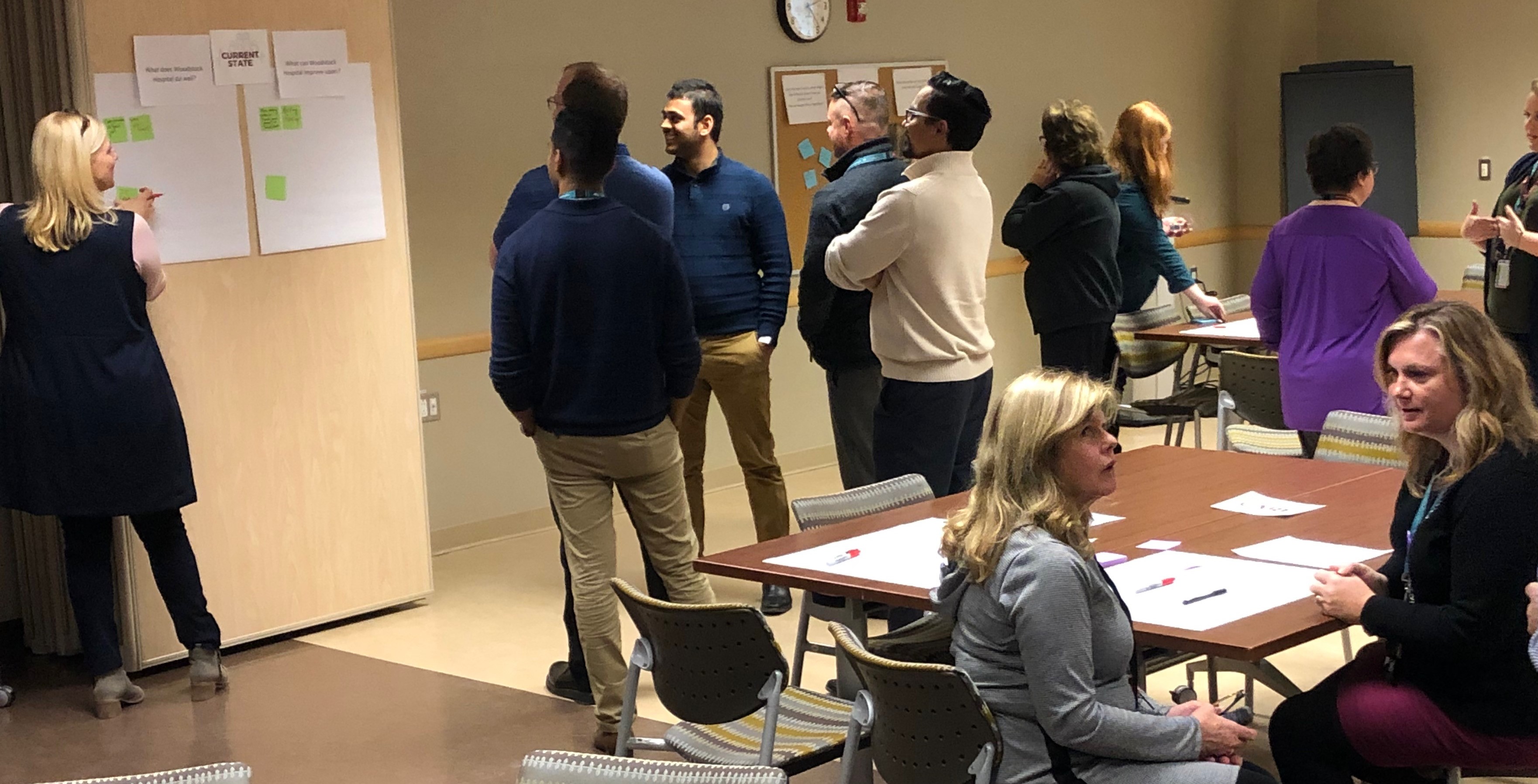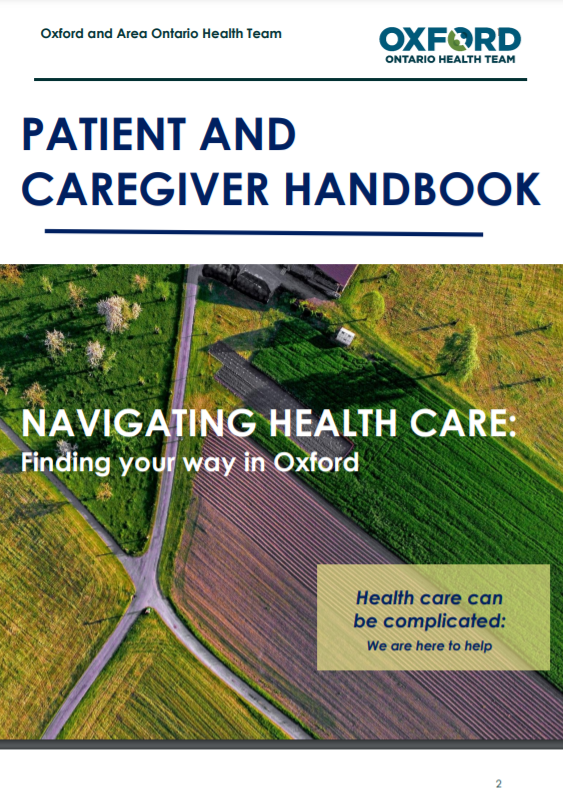As the province continues to navigate the pandemic, lessons have emerged, particularly in terms of gaps in health equity and care. These insights will help build an even stronger health system, one which includes a deliberate focus on achieving greater health equity, integration of health and social services, and initiatives that contribute to the overall improvement of the health of the population. This article is the third in a series exploring the concept of population health, with the goal of considering the role of a hospital in producing population health. This series features successful initiatives of health systems that have invested beyond their walls to improve the health of their communities. To visit the population health resource page, click here.
In developing its current strategic plan (2020-2025), Woodstock Hospital understood the vital importance of going grass roots, engaging the community directly and as broadly as possible, to ensure that Oxford County residents had a voice in shaping the hospital's plan. More importantly, by also meeting with residents in the community, the hospital reached individuals who may not have otherwise had the opportunity to provide input into the strategic plan. This approach helped the hospital better identify and understand the everyday barriers people face when trying to access care – barriers which impact their health.
"Past strategic plans had focused primarily on the construction and transition into our new hospital facility," shared Perry Lang, Woodstock Hospital's President and CEO. "For the current strategic plan, we had the opportunity to create the unique position of Director of Strategic Planning and Community Engagement, who could ensure that we heard the voice of the population we serve."
This new position of Director of Strategic Planning and Community Engagement was filled by Mark Weir. Mark, who began in the role in 2019, led the development of the strategic plan; his dual role emphasizes the vital link between engagement and planning.
"The community was impressed with the engagement process the hospital took in reaching out to many community agencies, leaders, and the general public, themselves," said Mark.
 From a population health perspective, this strategy made sense as it is important to be able to identify the factors that may be impacting the health outcomes of a particular community, such as income, education, and inadequate access to transportation. This is an example of some of the non-medical factors affecting health outcomes that arose during the engagement process (to learn more about some of these factors, visit the OHA's population health resource page).
From a population health perspective, this strategy made sense as it is important to be able to identify the factors that may be impacting the health outcomes of a particular community, such as income, education, and inadequate access to transportation. This is an example of some of the non-medical factors affecting health outcomes that arose during the engagement process (to learn more about some of these factors, visit the OHA's population health resource page).
Informed by a number of local agencies that had previously done community-focused engagement sessions, the hospital was able to learn specifically from the United Way's earlier community engagement, looking broadly at quality of life among residents, which encompassed their overall wellbeing beyond health care. By leaning on local expertise provided by public health, the hospital undertook an environmental scan to better understand socio-economic factors affecting community members' health. For regional-level insight, they worked with the County of Oxford, Southwestern Public Health, as well as the former local health integration network, now Ontario Health.
Overall, this was an important experience for hospital leadership, validating a need for Woodstock Hospital to focus greater emphasis on preparing patients and caregivers prior to arriving at the hospital, further supporting individuals upon discharge, and sharing more information with the local community to help people stay healthy and manage their own health. It also supports community access to the facility through expansion of transit infrastructure and transportation supports. Internally, Woodstock Hospital is also looking at how to help staff learn more about the non-medical factors that influence health outcomes.
 The research and understanding from the hospital's community engagement and the work of the Oxford and Area Ontario Health Team (OHT), of which Woodstock Hospital is a key partner, identified the need for a resource that would further support the needs of the community. Mark was instrumental in the development of this resource: the award winning Patient and Caregiver Handbook. This handbook was designed to help residents of the region navigate health care in Oxford County and provide practical guidance for navigating appointments, tests, procedures, referrals, and follow-ups that can involve a variety of people, organizations and locations. The handbook has been translated into five additional languages reflective of the community's diversity, and was awarded the Integrated Care Runner Up Award at the North American Conference on Integrated Care in early October 2021.
The research and understanding from the hospital's community engagement and the work of the Oxford and Area Ontario Health Team (OHT), of which Woodstock Hospital is a key partner, identified the need for a resource that would further support the needs of the community. Mark was instrumental in the development of this resource: the award winning Patient and Caregiver Handbook. This handbook was designed to help residents of the region navigate health care in Oxford County and provide practical guidance for navigating appointments, tests, procedures, referrals, and follow-ups that can involve a variety of people, organizations and locations. The handbook has been translated into five additional languages reflective of the community's diversity, and was awarded the Integrated Care Runner Up Award at the North American Conference on Integrated Care in early October 2021.
"The aim of the handbook is to help people be more informed throughout their healthcare journey," said Mark. "Our goal was to create something simple to encourage active partnership between patients, caregivers, and their providers, which would hopefully lead to better health experiences and outcomes."
The COVID-19 pandemic has strengthened the partnerships among Oxford County healthcare providers as they continue to focus on a unified response to the crisis. When appropriate, the focus of this group will be to further emphasize helping people stay healthy in the community and access coordinated health services across all sectors. Some examples include mental health and addictions, palliative care, chronic care, diabetes, and eye care, amongst others.
Woodstock Hospital and its partners have taken important first steps to promote their community's wellbeing. These include acquiring a more comprehensive picture of residents to understand barriers to accessing care and helping empower them in navigating the health services within their community.